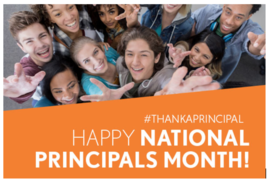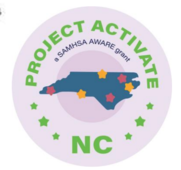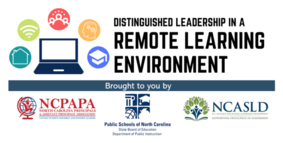|
|

Board Updated on Development of Innovative Assessments for NC Schools and Students
The Department of Public Instruction’s accountability division continues to make headway on developing a more formative assessment regimen seen as a potential replacement of the state’s strictly summative end-of-grade and end-course tests administered at the end of the school year.
Accountability Director Tammy Howard updated members of the State Board of Education during their meeting this month on the progress of the initiative to develop the Personalized Assessment Tool (NCPAT), for which the U.S. Department of Education granted the state authority to pursue in 2019.
“The key purpose is to give feedback to teachers and students so additional instruction can occur throughout the school year,” Howard said, “with the goal of increased student achievement on the end-of-year assessment.”
In development is a series of three formative assessments given at intervals during the year, followed by an adaptive, summative exam at the end of the year that would be based on a student’s results from the assessments given throughout the year.
“The flexible summative assessment will take information from the three interim assessments to position students to enhance their ability to demonstrate proficiency,” Howard said. “This will give different students different assessment experiences. Some of the feedback we’ve heard the past several years is that some students when they approach EOGs get very frustrated by items they cannot answer, and they just give up.
“So, having this flexible, adaptive approach that is using information from the three interims will enable us to deliver items to students with the range of their ability, but giving them also – through this flexible adaptive part – that they can all demonstrate that they have met level five achievement.”
Because of the pandemic, Howard said, a pilot of the assessments that had been planned for the 2020-21 school year was delayed until this year, when 78 schools -- across 10 districts, six charter schools and the Cherokee Central Schools -- will be using the new assessments in math and reading in fourth and seventh grades. The plan calls for statewide administration in grades 3-8 for both math and reading during the 2023-24 school year.
|

“Turbulence” in Charter School Enrollments Prompts Review of Funding Approach
Unexpected shifts in charter school enrollments from 2020-21 to the current school year raised questions about the timing of funding allocations at this month’s State Board meeting.
Even with significant growth in the number of charter schools and the number of students they enroll during the last 10 years, legislation and policy governing the budgeting process for charter schools hasn’t changed since the schools were first launched, DPI’s Chief Financial Officer Alexis Schauss told the board.
The number of charter schools has doubled over the last 10 years from 100 to 200, enrollments in charter schools have nearly tripled during the same period from 45,000 to 125,000 and state funding has increased from $228 million to $822 million.
“It’s clear to the school districts, to the DPI and to the charter school community that we have kind of outgrown the way we are funding charter schools,” Schauss said. “When it was a 3% of the [student] population, the population was very stable, and the schools were much smaller.
“Ten years ago, we probably had less than 10 schools that were over 1,000 students. Now we’re probably at 35 schools. So, when they’re increasing 10% or 20%, it’s having a lot more of an impact on the school districts than it was before. Since 2012, when the cap was lifted, it has been increasingly evident each year that this is a topic that needs to be looked at.
“It is not just for charter schools to look at or school districts or the legislature or the state board,” Schauss said. “It really needs to be looked at as a whole.”
Amy White, the chair of the board’s Education Innovation and Charter Schools Committee, said that “turbulence” in some charter school enrollments is causing adjustments in staffing after the school year begins, where schools may lose positions.
White said the issue was raised for board discussion to respond to concerns being raised about the impact of such turbulence and to address the issue of inequity and fairness about how charter schools are funded in relationship to school districts.
Board member James Ford said that while he recognizes that there have been shortfalls in funding for charter schools, he said that school districts are facing a similar situation.
“Both of those are issues about fairness and equity that need to be addressed,” Ford said.
State Superintendent Catherine Truitt said that any adjustment in funding approaches must results in a “win-win.”
“To be clear, what we want to do is avoid fixing the issue with charter school funding in a way that will have a negative impact on LEAs,” Truitt said.
|

Board Recognizes National Principals Month with Praise for State’s School Leaders
State Board of Education Chairman Eric Davis opened the board’s October meeting by recognizing the vital contribution made by principals across the state. At the following day’s session, board advisors Brenda Stephens, a member of the Orange County School Board, and Brent Williams, superintendent of Lenoir County Schools, also offered their words of gratitude:
Eric Davis: “Know that we appreciate, admire and cherish every one of our principals. Each day, you provide the essential leadership in creating positive, uplifting, and safe environments for your students and the staffs that you lead.
“While the last year and a half have been some of the most challenging of your careers, you never wavered in your commitment and care for every student and staff member on your team. We are grateful and thankful for you, not just in October, but each and every day. You’ve earned the trust, confidence, and enduring respect of all of us.
“And while you’re leading others, be sure you take some time for yourself, to take care of yourself as you continue to pilot the schools that you lead. Thank you for your selfless leadership.”
Brenda Stephens: “Principals are among the hardest working and yet often least recognized individuals in education. They set the academic tone for their schools, and it is their vision, determination and dedication that provide the mobilizing force for achieving student success. On behalf of school board members, we honor our principals for their tireless efforts in pursuit of excellence in education.”
Brent Williams: “In this time of pandemic and recovery, there is so much that is still uneasy and somewhat unknown, some things remain absolutely certain. Our outstanding principals, like so many other wonderful educators in our schools, step forward every day to lead the way with courage and heart for the students and staff members that we all are richly blessed to serve.
“These outstanding school administrators are responsible for what on any given day can seem like everything in the world on a school campus. When the pandemic hit, they not only adapted to the different, the unfamiliar and the often just plain uncomfortable requirements created by the COVID-19 response, but also, they created new and innovative pathways to leading and lighting the way.
“Their hard work and compassionate leadership helped our schools to reopen safely and to move forward in service to our young people with so much pandemic-related anxiety and points of potential disagreement in our communities across the state and across our nation.
“Let us be resolved as educators, as parents, as citizens of our nation to lift up in admiration and appreciation these special leaders – our principals – for the inspiring and powerful example of true excellence in leadership that they set forth on our school campuses every day. Let us thank the principals.”
|

With Additional Grant Award, State Mental Health Initiative Expands to More Districts
State Board members learning this month that a second five-year grant award from the federal Substance Abuse and Mental Health Administration is allowing an effort aimed at addressing the mental health needs of students to expand to three additional school districts.
The Project AWARE initiative, or as it is known as Project ACTIVATE in North Carolina, is a partnership between the Department of Public Instruction and the state’s Division of Mental Health and focuses on three key goals:
- Increase awareness of mental health issues among school-age youth
- Provide training for school personnel and other adults who interact with school-age youth to detect and respond to mental health issues
- Connect school-age youth who may have mental-health issues and their families to needed services
Under an initial $8.8 million grant for the period 2018-23, three districts have been participants in a first cohort: Beaufort, Cleveland, and Rockingham county schools. A second cohort of districts, supported with the additional $8.9 million grant for 202-26, includes Jackson, Nash, and Sampson county schools.
Matt Hoskins, assistant director of DPI’s Exceptional Children’s division, told the board that the need for more robust mental health services for students has only grown as a consequence of the COVID-19 pandemic. He said that children ages 10 to 18 accounted for a disproportionate share of emergency room visits in the state due to self-inflicted injuries during the 12-month period, May 2020 to April 2021. While that age group represents 16 percent of the state’s population, Hoskins said, they accounted for 32 percent of emergency room visits for self-inflicted injuries.
The specific variables underlying those incidents are still being analyzed, he said, but the absence of regular in-person school will likely be found to be a critical factor.
“I can’t imagine a scenario where we don’t deduce some conclusion that school is absolutely a protective factor for the mental wellness of students,” Hoskins said.
He told the board that the focus of Project AWARE/ACTIVATE is to ensure that schools have the capacity to provide key “whole child” support for students in an equitable way.
“What we are studying through Project AWARE is how do we create a sustainable system at the state and local levels that will enhance these protective factors of school and ultimately promote mental wellness and readiness to learn,” Hoskins said.
“The most critical thing that we’ve learned through the evaluation of Project AWARE is the context of community and school are tremendously important. In fact, they’re likely the most important of all implementation factors,” he said. “What works in Cleveland County might be quite different from what works in Rockingham County or Beaufort County. A one-size-fits-all approach is not going to work for school-based mental health.”
|

School Closures and Remote Learning Spurred Innovative Responses
Schools and educators were forced to find new approaches to teaching and learning removed from classroom when schools were abruptly closed in March 2020, with many not returning to in-person instruction until late in the 2020-21 school year, if at all.
Among the innovative responses developed in the early weeks and months of the COVID-19 pandemic were two reviewed by State Board members at their meeting this month: the At Home Learning Initiative, a partnership between UNC-TV, the Department of Public Instruction and the Friday Institute for Educational Innovation, and the Distinguished Leaders in a Remote Environment initiative, a professional development effort for principals and led by principals to figure out how to teach and support students from afar.
The At Home Learning effort began in spring 2020 with curated content that was aired on television to provide free, curriculum-informed programming, especially for those with limited or no internet access. Under a second phase of the initiative, called Classroom Connection, the remote-learning initiative evolved with teacher-created content in math and literacy instruction for students in Pre-K to grade 5.
A brief video about the initiative summarized both the rapid and committed response from educators in its development as well as the innovative direction of their lessons.
“Instead of teachers recreating classroom lessons, educators leaned into their new environment (Friday Institute classroom turned TV studio), took risks and found new ways to teach topics like math and literacy,” the video caption explained.
Erin Huggins, a research associate with the Friday Institute, told the board that an evaluation of the program found that teachers who were a part of the initiative reported that the experience had prompted them to shift their thinking about how they might engage students from a distance and that teaching the video lessons required them to reflect on the ways students learn from video as opposed to in-person learning.
Huggins said also that the evaluation showed that all teachers involved in the effort said they thought the lessons had positively impacted student achievement.
State Superintendent of Public Instruction Catherine Truitt asked that future evaluation focus specifically on a rural county lacking robust internet access and its effect on a specific group of students.
“How will this be beneficial in the future when students are in school?” Truitt asked.
|

In her presentation about the Distinguished Leadership in a Remote Learning Environment initiative, Shirley Prince, executive director of the North Carolina Principals and Assistant Principals Association, told the board that school leaders were eager for support when classroom instruction came to a halt.
“We knew there was a lot of angst out in the field amongst our school leaders,” Prince said, “and we wanted to help them any way we could.” She said the initiative, developed by the North Carolina Alliance for School Leadership Development and NCPAPA, focused on the areas of quality instruction, coaching and evaluation of teachers and communications.
“We thought it was important for our principals to understand the role that they played in helping their teachers develop a shared vision for what quality remote instruction looks like,” Prince said. “We knew there was a need for helping principals understand how they were going to coach their teachers evaluate them in this totally unfamiliar environment.”
She noted that it was important also to help teachers feel a greater sense of efficacy, “knowing that even our best teachers during this time were feeling very inept.”
The initiative developed a set of on-demand, stand-alone webinars to support principals and also have identified 10 exemplary principals to facilitate small networks of school leaders in grade-alike groups, that started meeting monthly in May, to talk about the issues they’re dealing with, to learn from one another and to hear what’s working, what’s not working and discuss lessons learned.
Surveys of participants found positive reviews, Prince said, showing this one as an example:
“...what I learned will last the remainder of my career and how we approach educating each child. Chances are, virtual instruction will be part of the education landscape going forward. Even though I was not able to implement everything I needed to, I now have more tools in the tool box.”
|
|
|
|
|
|
|